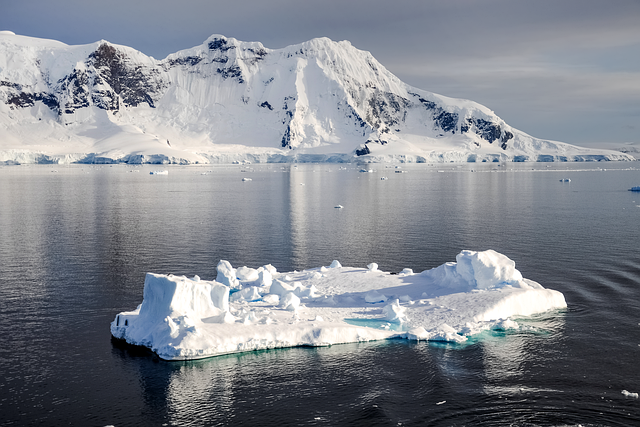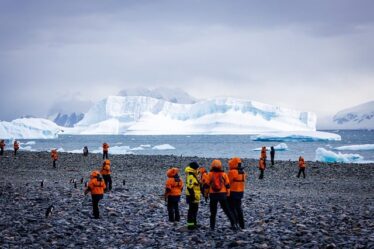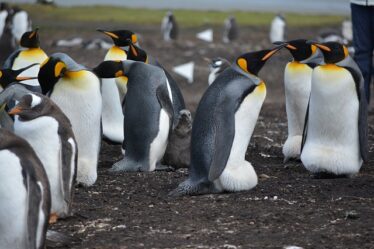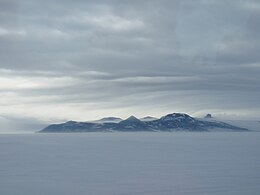
Paradise Bay, located on the western coast of the Antarctic Peninsula, is one of the most breathtaking and accessible areas in Antarctica. This stunning bay offers a unique blend of dramatic landscapes, rich wildlife, and the serene beauty of one of the planet’s most remote and pristine environments. Known for its spectacular ice formations, glacial scenery, and serene atmosphere, Paradise Bay is a highlight for those exploring the Antarctic region.
Geography and Climate
Geographical Features
Paradise Bay is a large, sheltered bay situated off the western side of the Antarctic Peninsula. It is surrounded by towering mountain ranges and expansive glaciers, creating a dramatic and awe-inspiring landscape. The bay is dotted with floating icebergs and ice floes, adding to its ethereal charm.
- Glacial Features: The bay is bordered by several notable glaciers, including the Lemaire Glacier and the Lallemand Fjord. These glaciers contribute to the bay’s dynamic ice formations and contribute to its pristine beauty.
- Ice Formations: The ever-changing ice formations in Paradise Bay include enormous icebergs, ice floes, and intricate ice sculptures. The contrasting hues of blue and white create a mesmerizing visual experience.
Climate
Paradise Bay experiences an Antarctic climate, characterized by cold temperatures and significant snowfall. The summer months (December to February) offer the warmest weather, with temperatures ranging from -2°C to 8°C (28°F to 46°F). During this time, the bay experiences 24-hour daylight, which allows for extended exploration and sightseeing.
- Summer: The Antarctic summer is the best time to visit, as the ice melts slightly, and conditions are less harsh, making it easier to navigate the bay and enjoy its natural beauty.
- Winter: During the Antarctic winter (March to November), temperatures drop significantly, and the bay is covered in ice and snow, making it inaccessible to most visitors.
Wildlife and Natural Beauty
Wildlife
Paradise Bay is home to a diverse range of wildlife, both on land and in the waters. The bay provides a crucial habitat for several species of birds and marine animals, making it an important area for wildlife observation.
- Penguins: The bay is frequented by several species of penguins, including Gentoo penguins and Adelie penguins. These charming birds can be seen waddling on the ice and swimming in the frigid waters.
- Seals: Seals, including Weddell seals and crabeater seals, are commonly spotted around Paradise Bay. They can often be seen lounging on ice floes or swimming near the bay’s shores.
- Whales: While less common, whales such as Minke whales and Orcas have been sighted in the waters around Paradise Bay. Their presence adds to the allure of the bay and provides an exciting opportunity for wildlife enthusiasts.
Natural Beauty
Paradise Bay’s natural beauty is characterized by its pristine ice formations, majestic glaciers, and breathtaking scenery. The bay’s unique features create a landscape that is both tranquil and dramatic.
- Ice Sculptures: The bay’s ice formations, shaped by the movement of glaciers and the wind, create intricate and captivating ice sculptures. These natural artworks add a touch of magic to the bay’s landscape.
- Mountain Views: The surrounding mountain ranges provide a stunning backdrop to the bay’s icy waters. The snow-capped peaks and rugged terrain create a picturesque and awe-inspiring scene.
Activities and Exploration
Cruising and Boat Tours
Cruising is the primary way to explore Paradise Bay, as the bay is accessible by boat rather than by land. Boat tours offer a chance to experience the bay’s natural beauty up close and witness its wildlife and ice formations.
- Guided Tours: Many cruises to Paradise Bay offer guided tours with knowledgeable naturalists who provide insights into the bay’s geography, wildlife, and history.
- Zodiac Excursions: Smaller Zodiac boats allow for more intimate exploration of the bay’s ice formations and wildlife. These excursions provide an opportunity to get closer to the ice and observe wildlife in their natural habitat.
Photography
Paradise Bay is a photographer’s paradise, with its dramatic landscapes and stunning ice formations offering countless opportunities for capturing breathtaking images.
- Landscape Photography: The bay’s pristine ice, towering glaciers, and rugged mountains provide a wealth of subjects for landscape photography.
- Wildlife Photography: The diverse wildlife in Paradise Bay offers opportunities for capturing images of penguins, seals, and other Antarctic animals in their natural environment.
Scientific Research
Paradise Bay is an important site for scientific research, particularly in the fields of glaciology, climate change, and marine biology. Researchers study the bay’s ice dynamics, wildlife, and environmental changes to better understand the Antarctic ecosystem and its response to global climate change.
- Research Stations: Some research stations and field camps operate in and around Paradise Bay, conducting studies on various aspects of the Antarctic environment.
Practical Information
Getting There
- Cruise Ships: The most common way to visit Paradise Bay is by taking an Antarctic cruise. These cruises depart from Ushuaia, Argentina, or Punta Arenas, Chile, and navigate through the Southern Ocean to reach the bay.
- Travel Considerations: Due to the extreme conditions and remoteness of Antarctica, travel to Paradise Bay requires careful planning and preparation. It is essential to book through reputable tour operators and follow safety guidelines.
Safety and Preparation
- Clothing: Visitors should dress in layers, including insulated, waterproof, and windproof clothing. It is important to be prepared for cold temperatures and variable weather conditions.
- Health Precautions: Ensure that you are in good health before traveling to Antarctica, as the extreme environment can be physically demanding.
Environmental Conservation
- Leave No Trace: Visitors should follow the principles of “Leave No Trace” to minimize their impact on the pristine environment of Paradise Bay. This includes respecting wildlife, adhering to designated paths, and avoiding littering.
Conclusion
Paradise Bay in Antarctica is a stunning destination that offers a unique and unforgettable experience for those seeking adventure in one of the world’s most remote and pristine environments. With its breathtaking ice formations, diverse wildlife, and serene atmosphere, the bay provides an unparalleled opportunity to witness the natural beauty of Antarctica. Whether exploring its icy landscape by boat, capturing its grandeur through photography, or learning about its scientific significance, Paradise Bay is a true polar wonderland that captivates and inspires.


